Plants for a Haunted Halloween Garden
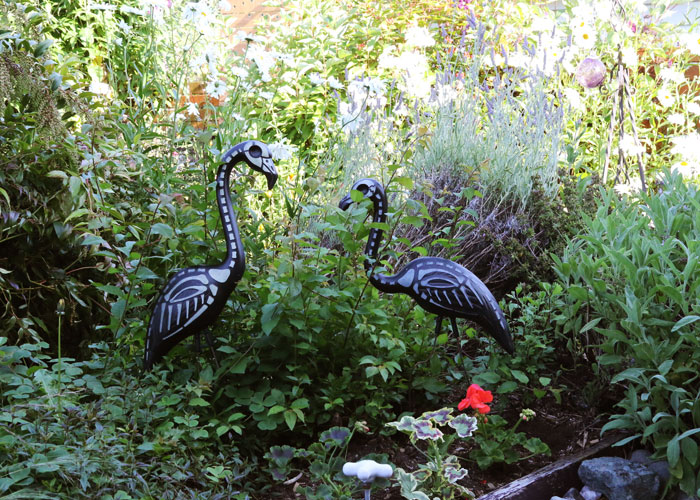
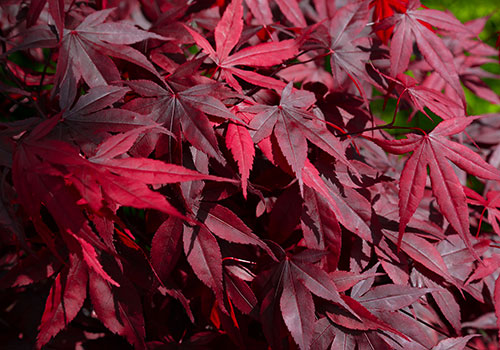
Two very special seasons collide in our October gardens. Of course, we’re talking about fall planting season, and spooky season! Now is the perfect time for our gardens to get into the spirit of things with wonderfully wicked plants of all kinds. Whether you garden in beds, in containers, or even indoors, we have some perfectly haunting plants for you this fall. This post is for all the black hearted green thumbs out there. Happy Halloween!
How to identify plants in photos:
On a desktop computer, hover/click over each photo for caption
On mobile devices, click for caption
Gnarled, Twisted, Ghostly, or Barbed...
Now, you don't necessarily need to go out and buy a bunch of plants to have yourself a haunting garden. Fall interest plants that aren't so creepy, or that you may already have, can be dressed up with cobwebs and colored lights. Today, however we're celebrating plants that grow in captivatingly spooky forms all by themselves. Twisty-turvy branches and imposing thorns can add beauty and interest to your garden at any time of year...
The gnarled form of Henry Lauder’s Walking Stick (Corylus avellana 'Contorta') would be right at home outside any haunted mansion, but it will be equally happy to adorn your garden or even a large container. Dressed up with a few pumpkins and maybe a giant spider or two, this plant is a Halloween decoration unto itself. In the winter, the plant transforms, with elegantly draping catkins that make this shrub an excellent year-round specimen.
Another terrifically twisted shrub, Corokia Cotoneaster, is so perfect for this season that it has earned not one but two spooky common names. Some call it “wire netting bush” due to its jagged, zig-zag branches. Others call it “ghost bush” because of the way its sparse foliage flutters between green topsides and ghostly-white undersides in the wind. This New Zealand native plant is just barely hardy in our region, so it might do best in a protected area, such as in a large container tucked up against a building. The stark, barren branches are perfect for this time of year, in contrast to its bright and sunny yellow flowers in spring.
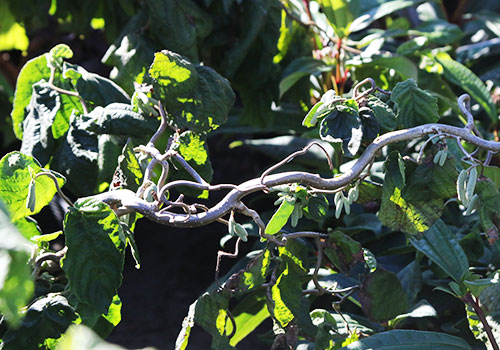
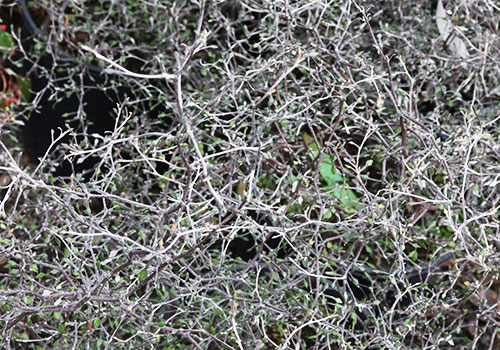
For an evergreen drama queen that is equally elegant draped in a shroud of cobwebs or dressed up for winter festivities, try Weeping Blue Atlas cedar (Cedrus atlantica 'Glauca Pendula'). This slow-growing shrub naturally grows in a draping habit, but can be trained into a twisty upright form. Either way, its ghostly-pale evergreen foliage makes the perfect backdrop for a halloween display.
But if dramatic shapes aren’t enough for you, maybe you’d like to add a little danger to your garden? Barberry is known for its ability to thrive in all sorts of conditions, its stunning fall foliage and the winter interest provided by its red berries, and its impressive arsenal of thorns. Handle with care, and you will fall in love with this particularly poky plant.
Barbed Wire Bush (Colletia hystrix) offers an even thornier experience. In fact, this unusual, hardy shrub sports more thorns than leaves! Nonetheless, even this prickly plant reveals a softer side: beautiful, fragrant flowers bloom in late fall and winter, right about the time we could all use more blossoms in our lives. Just, be sure to use caution when getting in close to the flowers...
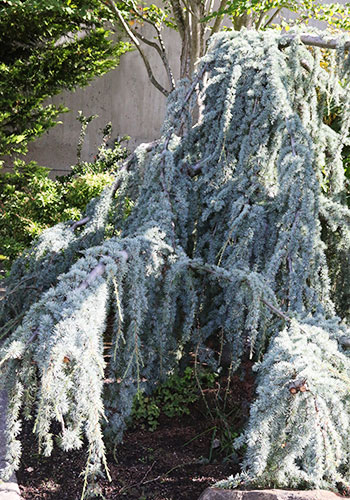
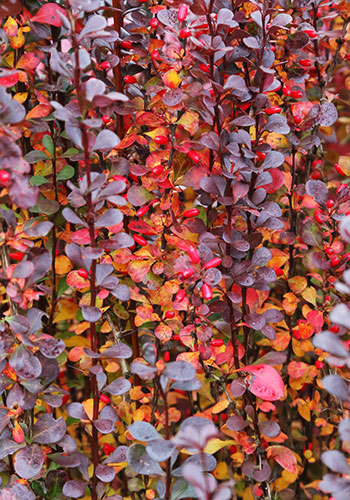
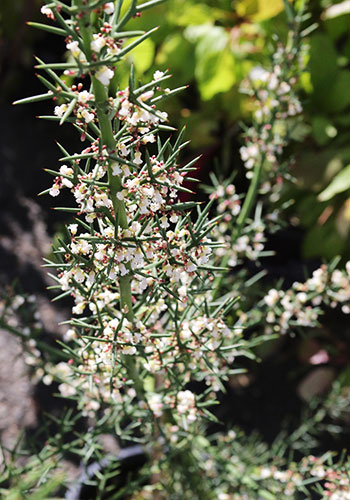
Spirit of the Season
Other plants are always dressed for Halloween. Try these fun and festive options in your fall containers, perhaps combined with some interesting winter squash and gourds, an antique babydoll if you're the eclectic sort, or a decorative skull.
Whenever black and orange come together, you know that Halloween is on the horizon. Orange flowers for fall containers include pansies and violas, mums, and even the last marigolds of the year. For something a little different, try perennial lantern plants (Physalis alkekengi), which sport adorable little fruits adorned with orange husks that look like tiny jack o’ lanterns.
Spider Web Fatsia is a striking variety of Japanese aralia with extensive variegation in its palmated leaves. One is reminded of both spiders, and ghosts! Egads! This plant is grows excellently in the ground or in containers, with evergreen trailing plants and deep purple heuchera.
Black flowers are certainly unusual, but there are a few options available this time of year. Look for pansies and violas that are such a deep purple that they are practically black, along with deep purple and black hellebores. You can also add black foliage to your beds or containers with favorites like black mondo grass (Ophiopogon planiscapus) and ‘Obsidian’ or 'Double Slate' heuchera.
Another easy way to add an instant creepy feel to your garden is to simply let dead plants be dead! Things like dried grass stalks, spent echinacea flower heads, or dried up and blackened seed pods on trees, will give the impression of a haunted home, and provide important overwintering food and shelter for native pollinators and birds.
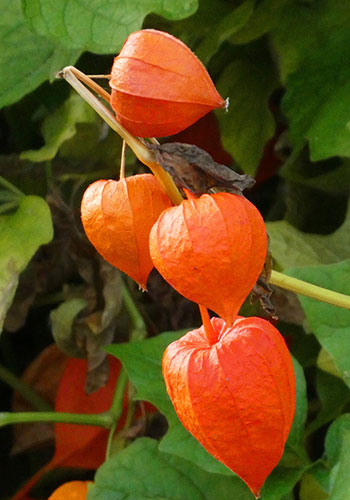
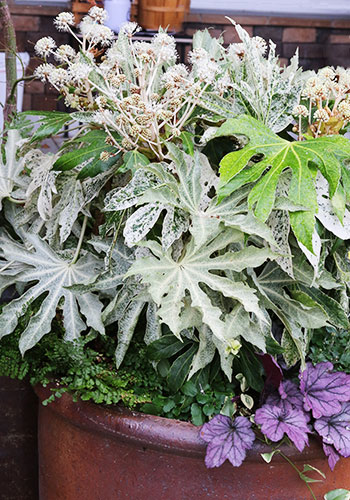
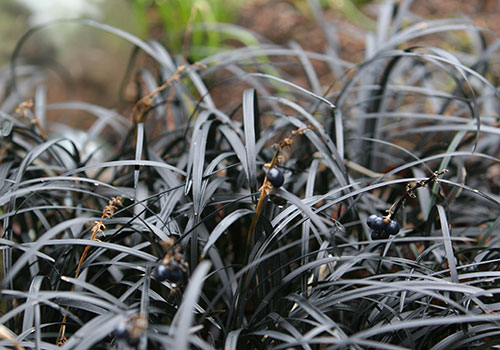
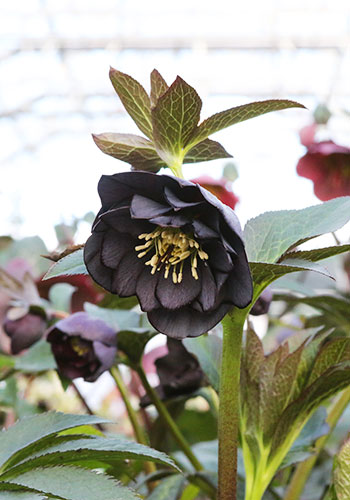
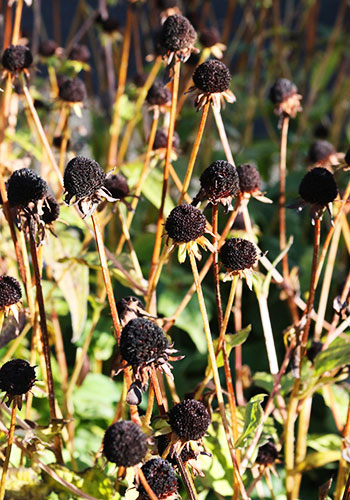
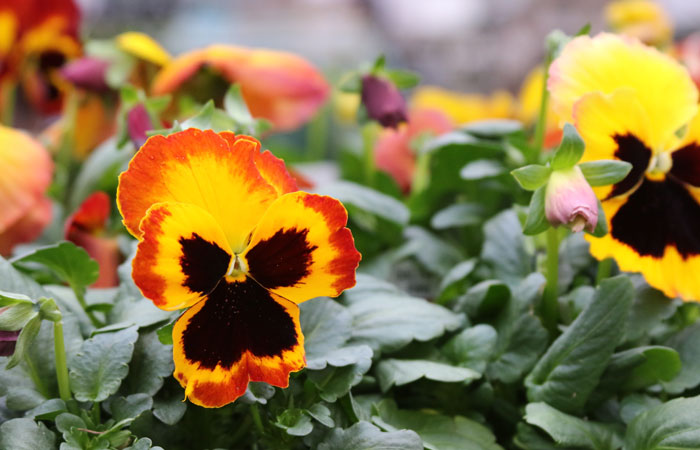
Bring the Frightening Foliage Inside...
In case your indoor garden is feeling a little jealous of all this outdoor revelry, don’t worry: there are plenty of fantastically frightful houseplants too!
For deep dark foliage that would contrast perfectly with a mini pumpkin or two, you can’t beat ‘Black Raven’ ZZ plants (Zamioculcas zamiifolia). The new foliage comes out electric green, while the older leaves are black as night, giving the whole plant a very witchy look. Plus, ZZ plants are among the easiest and most adaptable of indoor companions.
For even more dark-foliage drama, try the dusky leaves shot with alabaster veins of Black Velvet Alocasia (Alocasia reginula). Or go for an even showier look with the deep purple and shiny leaves of Persian Shield (Strobilanthes dyerianus).
Silver Baby’s Tears (Pilea glauca) provide a different kind of haunting beauty, with their draping, silver foliage. They would make a delightful contrast with darker-leaved plants for a windowsill Halloween display.
And of course,both spiky cactus and carnivorous plants are fascinatingly frightful at any time of year! Carnivore care is a little bit different from average houseplant care, but it’s not hard once you get the hang of it. What could be more perfect for this season than a carnivore terrarium all decked out with decorations? Well, not so perfect for your houseflies...
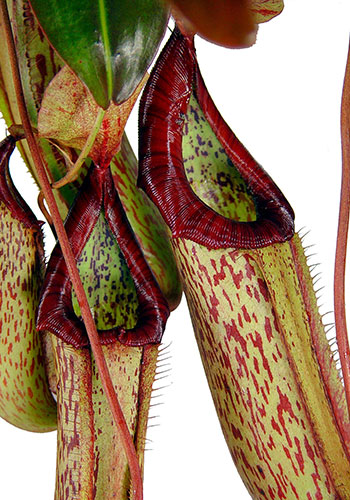
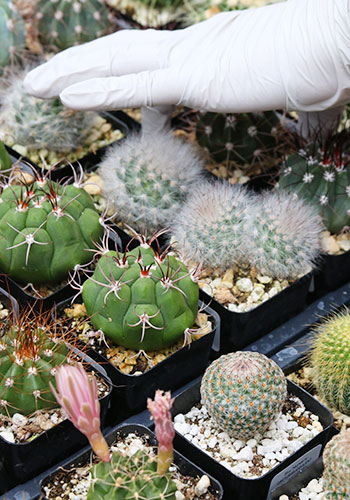
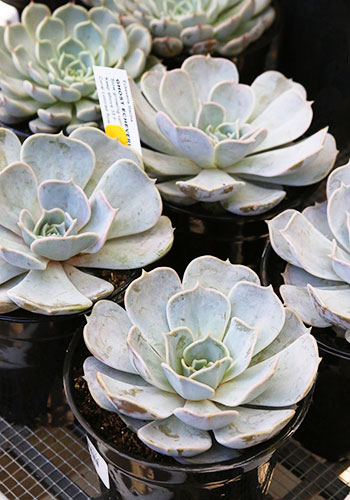
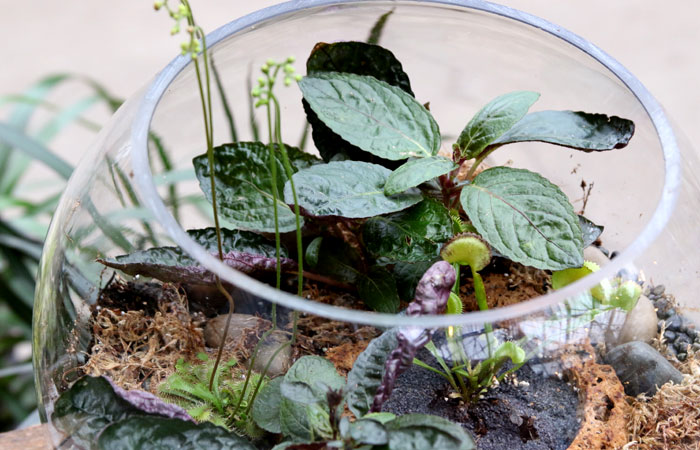
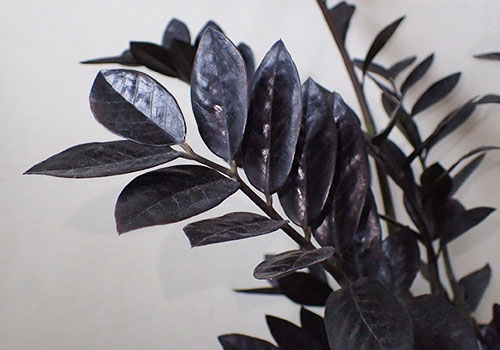
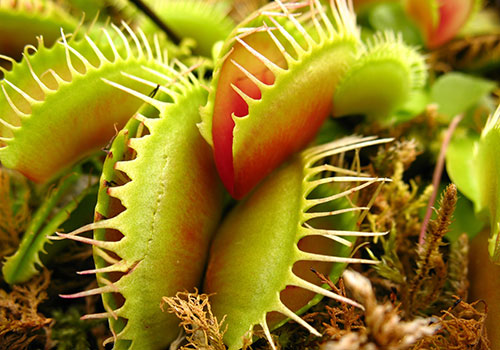
No matter which leafy companions you choose to celebrate with, we’re wishing you a month of delightful frights and a wonderful fall gardening season. Happy Halloweeeen!
As always, garden centers are a live product industry where available plant material changes constantly day to day and year to year. So, if you'd like to purchase a plant from this list, please call us to confirm that it's available before coming in. We're always happy to check stock for you!
